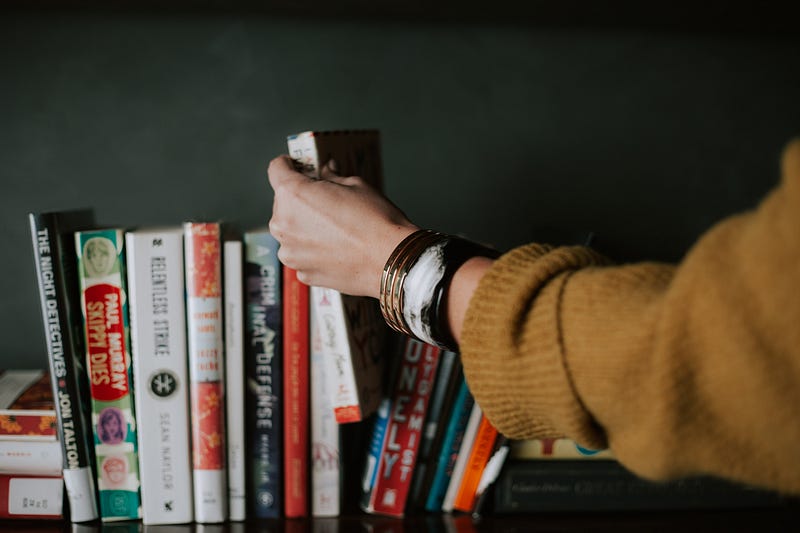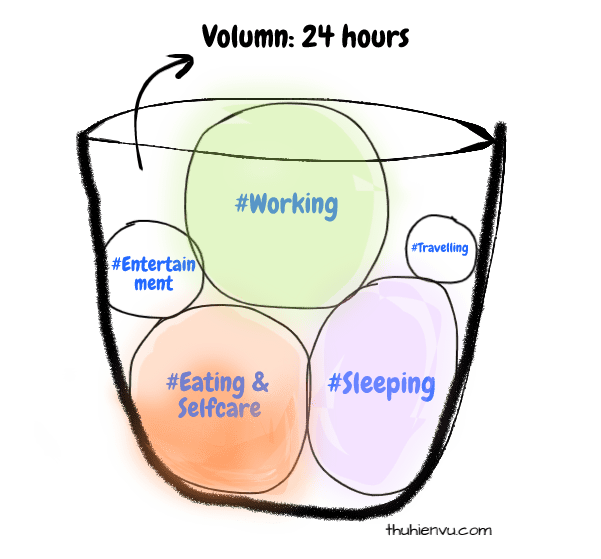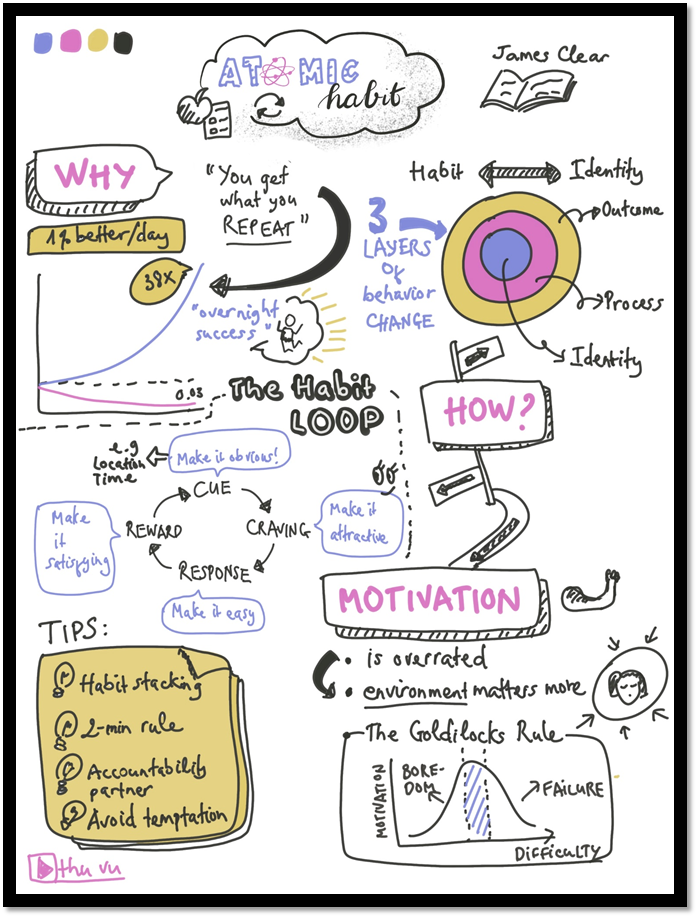
It took me a while to realise that perhaps everything I’ve been questioning or struggling with has already been written in a book by someone. It’s so delightful whenever I finally find a good answer to the question I’ve always had in a very random book. It also opens up our eyes to so many new ideas, wisdom and perspectives in a wide variety of topics, which ultimately helps us become a better person.
Now I’m committed to reading as much as I can, after a few years not investing serious effort in it with all kinds of age-old excuses (“too busy”, “too much work”, “having other plans”, “tired”, etc.). Indeed in the distractive life today, it’s hard to find the peace and sit down and read. In this post, I’m going to share with you some of my tips to read more and read smarter.
How to read MORE
#1. Using small “time gaps” in a day
There are small moments in a day in between big time blocks that can be utilized for reading, as this illustration shows.

For example, after dinner is a good “time gap” to grab something to read. That’s when you are relaxed, and all you want to do is lazily sit down and watch or read something.
If you can wake up early, great! — you can set a 15–20 minute block between getting up and going to work. It’s one of my favourite time gaps in the day because in the morning, your mind is clear, alert and energetic.
There is also “free” time that may emerge while we are doing something else. In my case, while waiting for the meal to be ready in the oven, I usually take the chance to do some light reading. This is not a perfect time, though. I remember ending up burning food at least a few times!
Similarly, commuting by train or metro is also an opportunity to pull out a book to read. Since we never know when those little time gaps appear, the best way is to make sure you always have something at hand to read. Nowadays I mostly use an e-reader, which makes it easier to always carry at least a few books with me in my bag.
#2. Dedicating a fixed time in a day to reading
It’s good to set a habit of reading around a fixed time of the day. In my case, I always try to read 15–30 minutes before bed. Slipping under the warm blanket with my e-reader, under the dim light of the bedside lamp or candle is always my favourite setting for reading. I do it everyday, because to me it’s more a luxury than an obligation.
#3. Less social media and TV
You may sometimes be surprised at how much time we spend on social media (average 2.4 hours per day). This is perhaps why we are so chronically “time poor” these days. We check our phone whenever possible: during travel, before work, after work, after dinner,… — basically all the free time we have. We as humans are constantly seeking stimuli and hope for an extra dose of dopamine that gives us more energy.
Therefore, staying away from social media is a promising way to find more time. That’s easier said than done, though.
A solution I have is: replace Youtube/ Facebook/ Instagram time with listening to podcasts and audiobooks (I will discuss audiobooks in a bit).
#4. Spend less time on reading book reviews
I found myself falling into this trap — spending too much time researching things to read. There are just too many books on Amazon to choose from. I often ended up wasting valuable time reading book reviews. Also, many books are repetitive of the same concepts. Only a few ones are highly original and most worth reading.
One of the best ways to find good books is to look at what highly successful people and voracious readers recommend. Bill Gates has a good reading list for entrepreneurs and human topics. So I would always make sure to go through them when I’m looking for something new.
If you haven’t done it already, create an account on Goodreads to explore all the goodies there.
Furthermore, a really good book is usually timeless, hence the classical bestselling ones are almost certainly worth reading as they have stood the test of time and been validated by a lot of people. They are also less bound to marketing and promotion as in the case of newer books.
Last but not least, good books naturally recommend each other. Many books have a small chapter near the end where you can find references and recommended reading by authors. I have got to know many really great books this way, those that I would have otherwise totally missed.
#5. “Reading” without actually reading 😉
If you really don’t want to dedicate the time sitting down to read:
Audible books are our saviors!
These days during the quarantine I often go for a long walk (1–1.5h) after work. After doing some “walking meditation” and filling as much the fresh air in my lungs and feel relaxed, I would plug in the earphones and start listening to a podcast or a book.
It is a great way to make the most out of your time, especially when you have a busy life or simply want to read more than your time allows. Like any human, you also need to eat, sleep, sport, go to work and hundreds of other chores. The good thing is, you can incorporate listening to a book into a lot of the activities you are already doing every day, including taking the train, doing workouts, cooking, doing laundry or whatever “dull” task you happen to be doing. Your creativity is the limit. This whole multitasking thing is possible because listening requires less effort than reading. You also don’t need to sit down and have a good light to be able to read.
When it comes to speed, you would be totally amazed. The average reading speed of an adult is 200–250 words per minute. With audio you can listen at the speed of 400 words per minute. That’s TWICE as fast!
In addition, if you speed up the audio you can “read” more in even less time. For example, for a book of 10 hours, if you listen to it with 1.8x speed (which is the speed I find the “just right” speed), it will only take about 5.5 hours! You can easily finish the book within 3–4 days. This makes reading 1–2 books a week now easily achievable!
Currently, I’m using Audible and really really love it. There is only a small problem: buying Audible books are quite expensive. Although there are ways to save money buy using discount and your free credit, it can still easily cost you hundreds of euros if you are reading more than 5 books a month.
The good news is, there is a (much) more affordable option. I recently came across Speechify. It’s a cool AI-powered app that can turn any text into speech. The reading voice is surprising of high quality. If you are curious to learn more, check out the article here by Speechify founder.
How to read SMARTER
In addition to spending more time to read, reading smarter helps you read more with the same amount of time. Here I want to share some tips and techniques that have worked like a charm for me.
Technique #1: Start with the overview
Before jumping to the first chapter, make sure you have read the summary of the whole book and take a glance at the table of content. Doing this will help you understand the overall message that the author wants to convey, and a broad picture of how he outlined the topic into individual chapters.
Technique #2: Laser focus
This one is pretty obvious, but very important. Being focused and mindful of what you read means that you are engaging with the information in the book, you question the ideas, you visualize the content in your head. This would simply not happen if you are not focusing, and it would be likely a waste of time as you may not even remember what you have read afterwards.
Technique #3: Don’t read every word
You may have heard this reading tip from your language teacher: “Don’t read every word”. It’s much easier for your brain to comprehend if you read in chunks of words. Your eyes do not have to move too much between each individual words, which enables you to read (much) faster.

Technique #4: Skimming through uninteresting parts
Sometimes you may find some parts of a book boring, irrelevant or outright repetitive. It’s fine to skim through those parts, and spend more time on the more interesting ones. On rare occasions, I had to skim through a whole book since I didn’t find it so interesting or valuable to read. It’s fine too to stop early if you don’t get any value from it.
Technique #5: Take side notes
Bill Gates and many avid readers believe that taking side notes and significantly increase the chance that we will remember what we read. Some people take notes on the blank area on the side of the texts as they read. However, since I read mostly on my e-reader, taking notes there is a little bit challenging.
I prefer to jot down quotes or ideas from a book on a separate (physical) notebook or an iPad (I use Notion as my main note-taking system), so I can have all the information in one place.
Technique #6: Make visual book summaries
I love taking visual notes of the interesting ideas I encounter in the book that I read. Not only that it helps me easily recall what I read later, but it also gives me the relaxing moment to reflect on what’s mentioned in the book and how I would like to incorporate those ideas in my daily life.
The note below is a summary I made for the book Atomic habit by James Clear.

If you are curious about how I created this note, in the video below I talked about visual note-taking and the entire process of making it.
There are several ways to make reading more effective, enjoyable and accessible in our daily life. One book may not change your life, but several books CAN change your life — I wholeheartedly believe so. I hope you enjoyed this article and let me know if you have extra reading tips that you want to share!
Originally published at https://www.thuhienvu.com.

